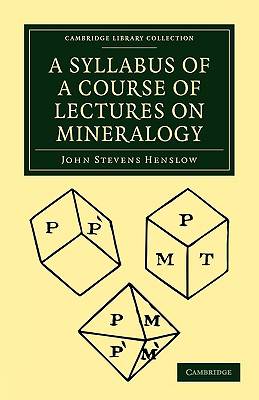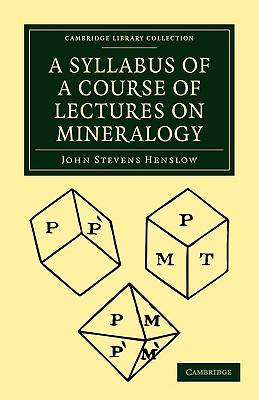
- Afhalen na 1 uur in een winkel met voorraad
- Gratis thuislevering in België vanaf € 30
- Ruim aanbod met 7 miljoen producten
- Afhalen na 1 uur in een winkel met voorraad
- Gratis thuislevering in België vanaf € 30
- Ruim aanbod met 7 miljoen producten
Zoeken
Omschrijving
John Stevens Henslow (1796-1861), a student of Adam Sedgwick, became Professor of Mineralogy at Cambridge in 1822. He soon moved to a chair in Botany, and became a teacher and mentor to Charles Darwin. This book on mineralogy was first published in 1823. It was intended to save time in class by providing an easily accessible reference to the composition of various minerals according to the principles of atomic theory, which was then entering the scientific mainstream. In that paradigm, analysis and examination of any mineral's composition involved first ascertaining the mineral's elementary molecules, both 'essential' and 'accidental', and second, determining the proportions in which the essential ingredients combined to form the integrant molecule of the mineral. Henslow's book will interest historians of science tracing the development of atomic theory, and those working more broadly in the history of university education and the intellectual climate of the nineteenth century.
Specificaties
Betrokkenen
- Auteur(s):
- Uitgeverij:
Inhoud
- Aantal bladzijden:
- 148
- Taal:
- Engels
- Reeks:
Eigenschappen
- Productcode (EAN):
- 9781108002011
- Verschijningsdatum:
- 20/07/2009
- Uitvoering:
- Paperback
- Formaat:
- Trade paperback (VS)
- Afmetingen:
- 140 mm x 216 mm
- Gewicht:
- 195 g

Alleen bij Standaard Boekhandel
+ 47 punten op je klantenkaart van Standaard Boekhandel
Beoordelingen
We publiceren alleen reviews die voldoen aan de voorwaarden voor reviews. Bekijk onze voorwaarden voor reviews.











